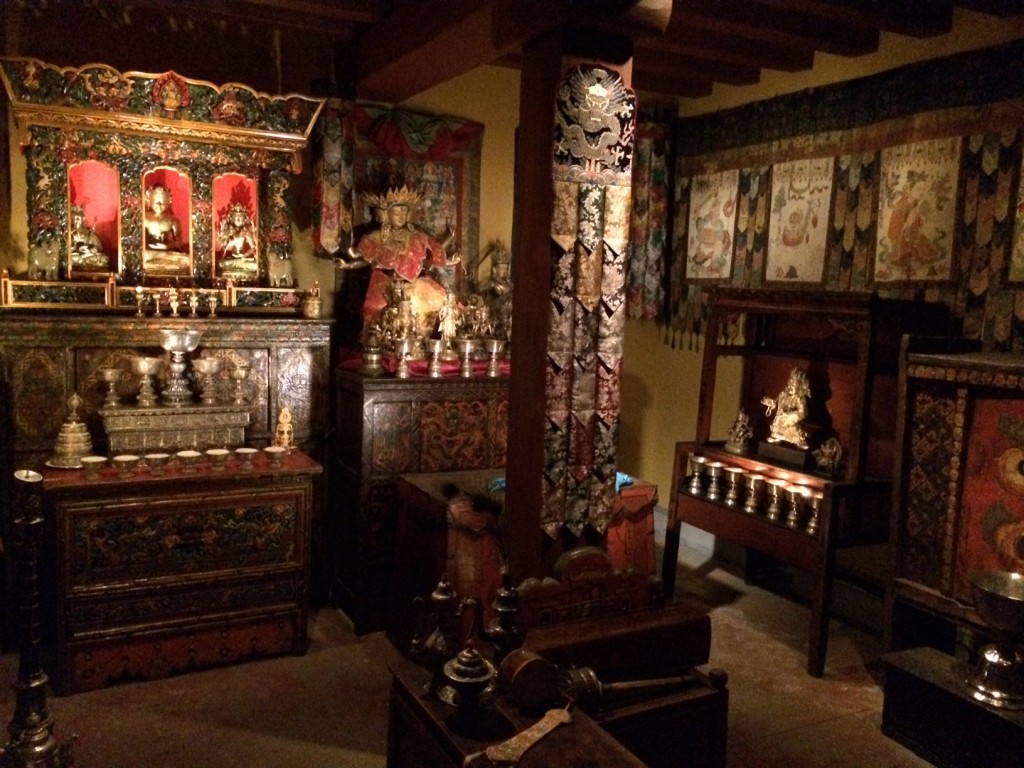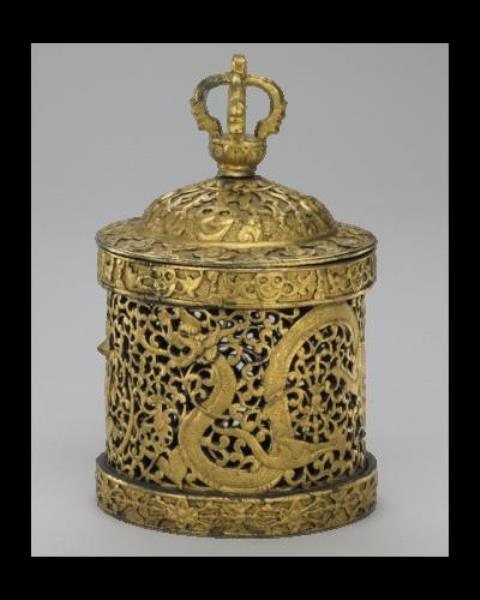Ashley Frenkel, our guest blogger, is an Education intern at the Rubin Museum where she assists with Adult & Academic Programs. Ashley is a junior at New York University where she majors in Art History.
The Rubin Museum of Art’s Tibetan Shrine Room reflects the Ancient Nyingma Tibetan Buddhist tradition. By understanding the pieces that comprise this room, one can come to understand just how important rooms like these are in the practices and theology of Tibetan Buddhism.
The Tall Offering Table seen above from the 19th century is hand painted wood with birds and dragons carved and highlighted by vibrant shades of blue, gold, orange and green. The dragon motif, borrowed from China, is joined with Tibetan elements of floral patterning. This offering table is not only aesthetically beautiful but functional. As you can gather from its name, this table is used for supporting offerings and ritual items during ceremonies…
such as this silver ewer, pictured above, also decorated with dragons.
Drums, cymbals, and conch shells supply sound and rhythm for rituals.
The sweet, smoky scent of incense lingers in the air, having permeated these objects after many years of use, exemplified by the incense burner below. You can taste the smoke on your tongue. It, too, is decorated with dragons.
The metal sculptures of deities, paintings, instruments, cloth banners, and ritual objects engage the fives senses, leading practitioners to the final sixth sense, the mind. With decades of dedicated practice, Tibetan Buddhists aim to access the subtle insight of the awakened mind.
 If you visit the Museum, don’t forget to explore the rest of the Shrine Room objects using the interactive touch screens outside the door.
If you visit the Museum, don’t forget to explore the rest of the Shrine Room objects using the interactive touch screens outside the door.
The Shrine Room opened in 2013 and will rotate its display every two years to allow for the presentation of three other Tibetan religious traditions as well: Sakya, Kagyu, and Gelug.






